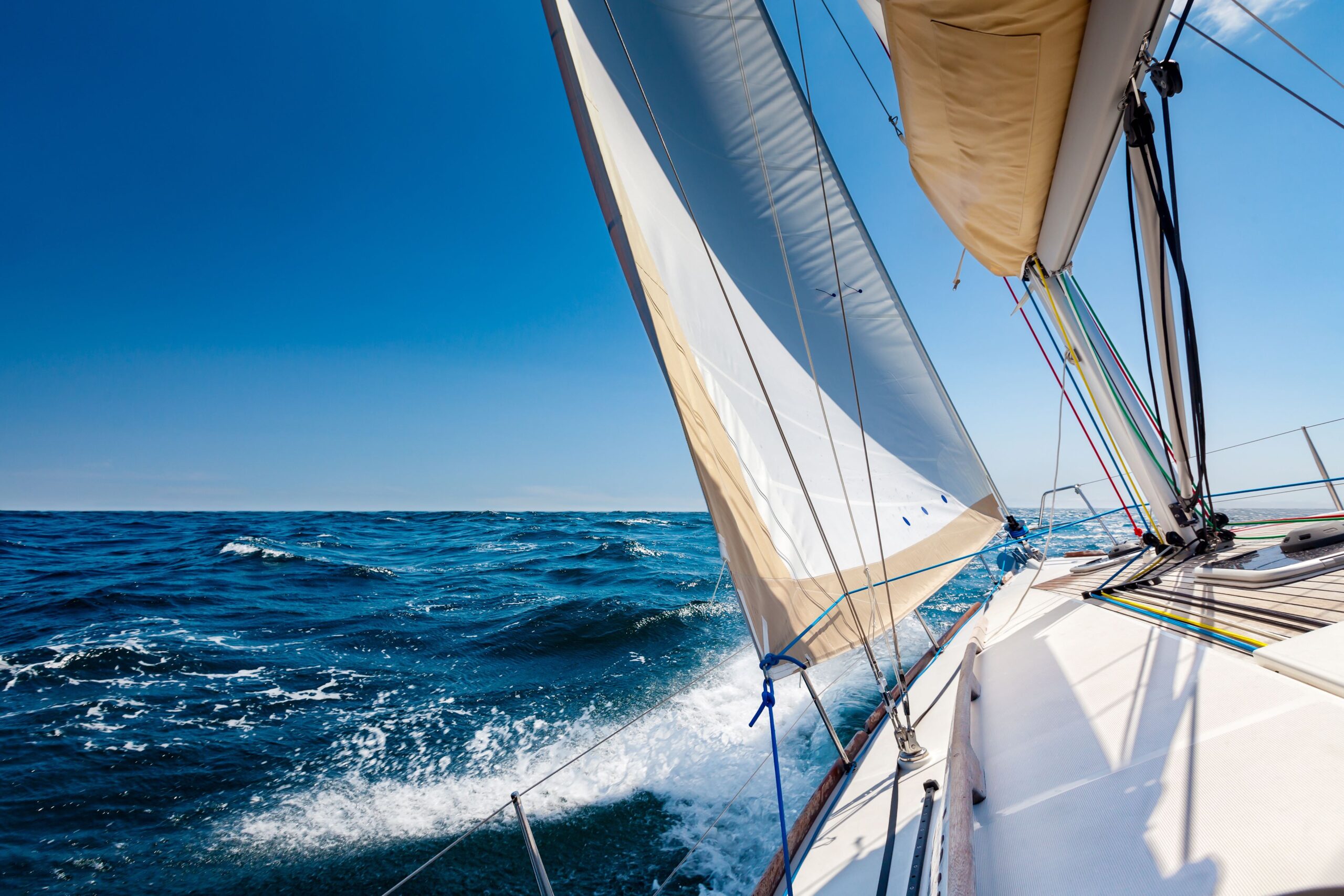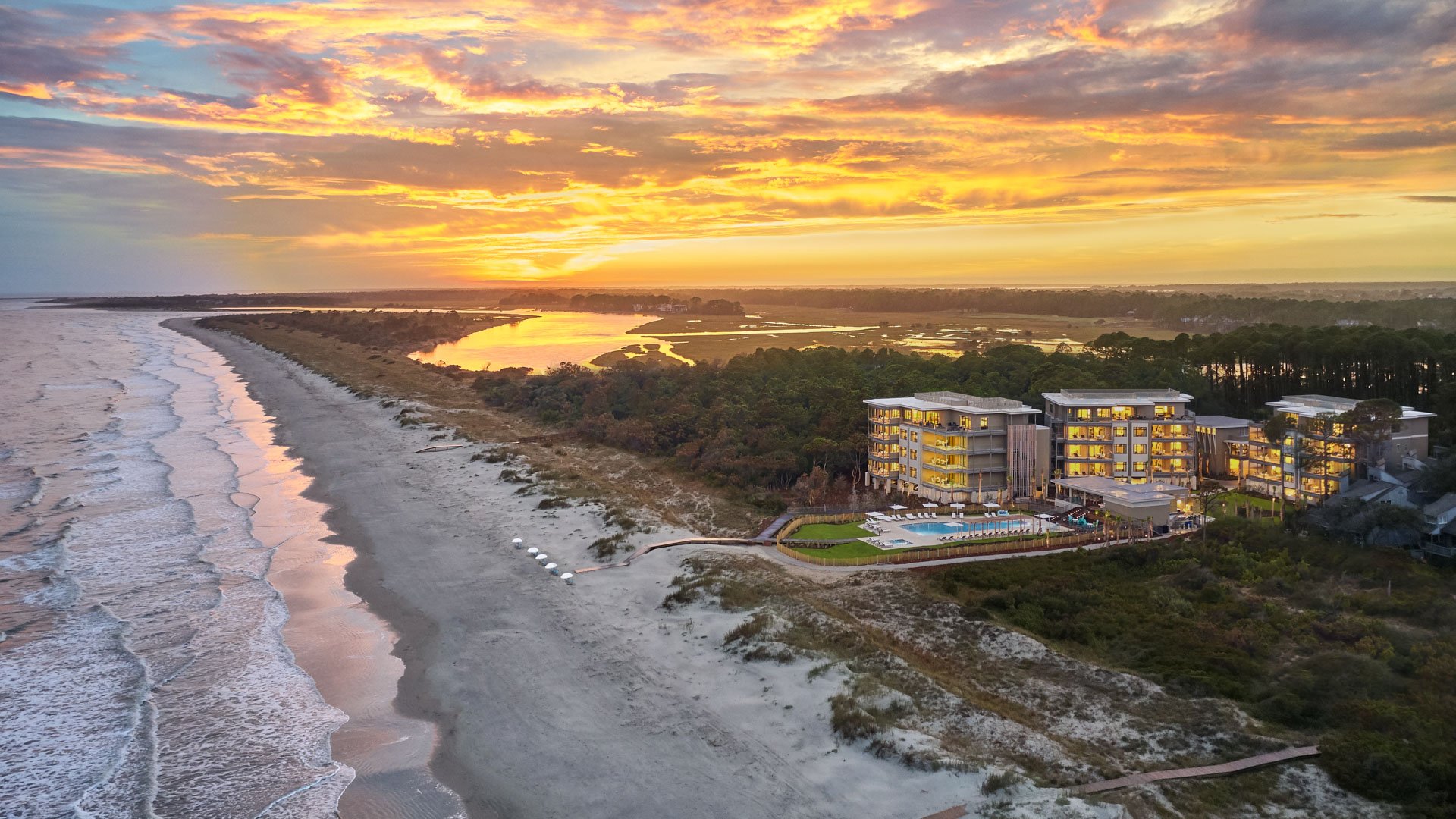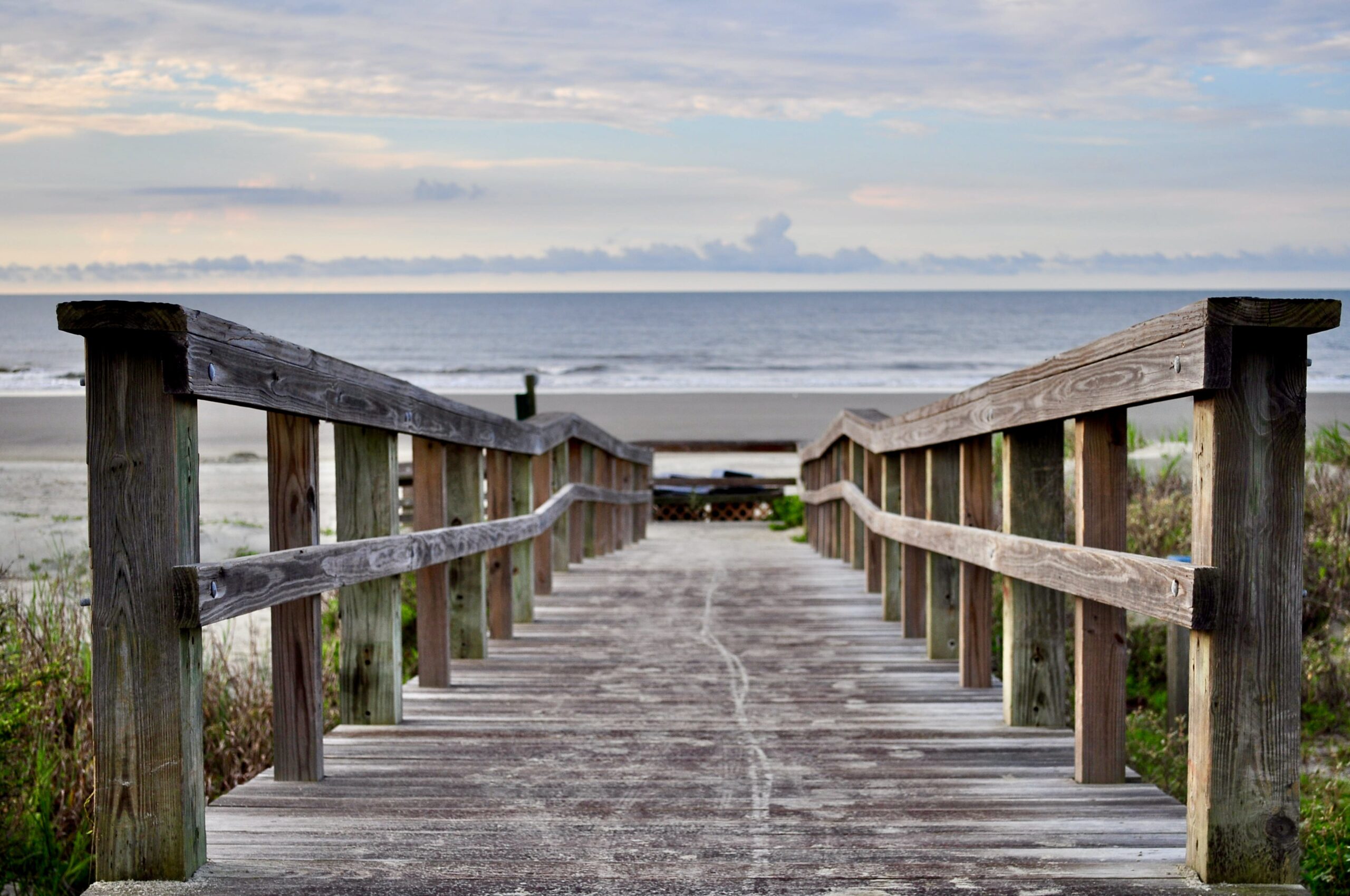Kiawah's Resident Dolphins
April 14, 2021
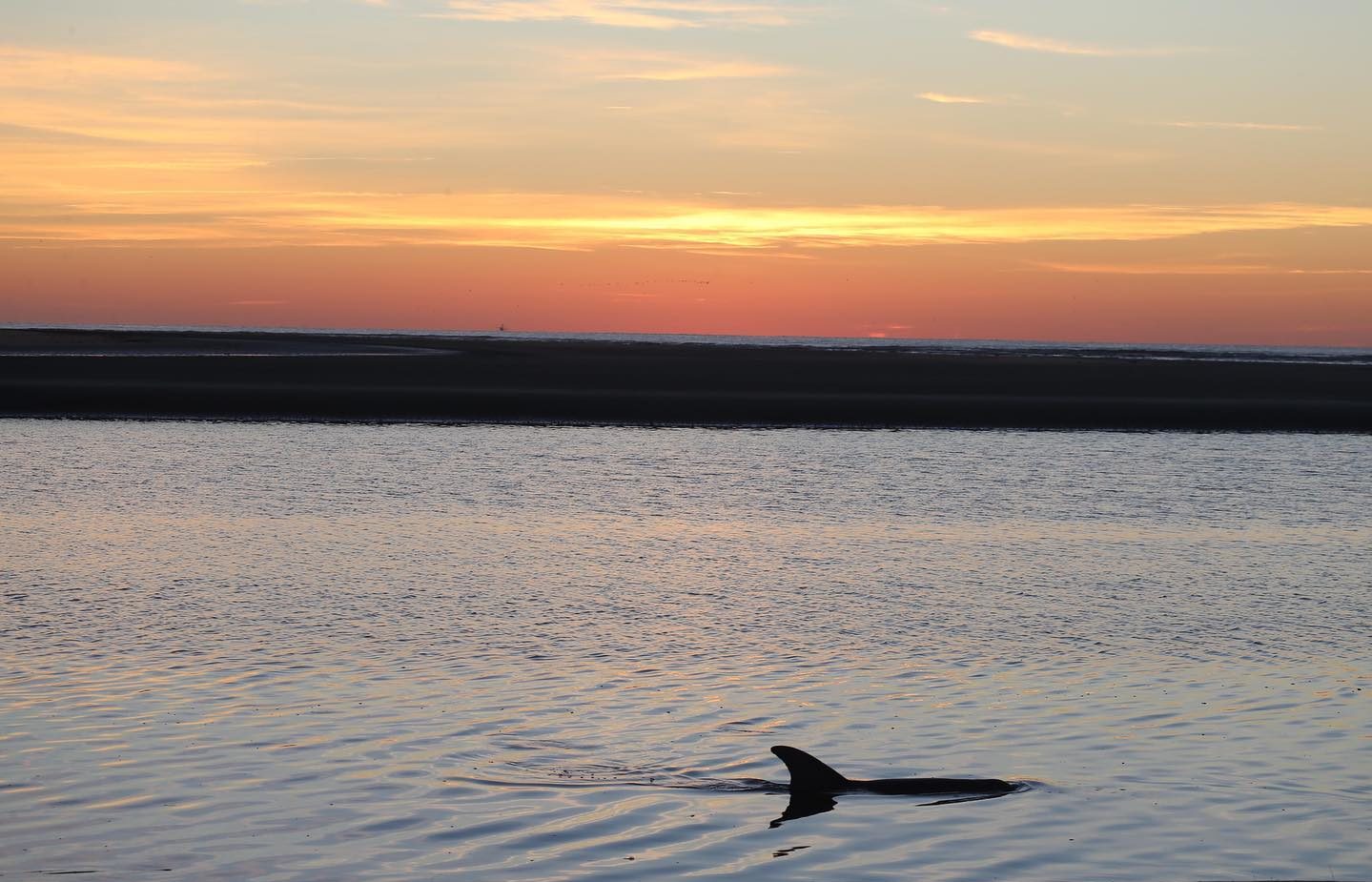
Dolphin sightings are a natural part of life on Kiawah, where Atlantic bottlenose dolphins (Tursiops truncatus) reside in the ocean, rivers, and inlets surrounding the island. Timbers Kiawah Owners have many opportunities to catch a glimpse of these highly intelligent marine mammals — be it from the spacious terrace of your residence, the oceanfront Beach Club Pool and Grill, the wide 10-mile beach, or exploring via kayak, SUP, or boat.
Those in the know will tell you the prime viewing location is Captain Sams Spit, a short stroll down the beach past Beachwalker Park, where the Kiawah River separates Kiawah and Seabrook islands. Around low tide most days, dolphins congregate here and participate in “strand feeding”, a spectacular and very rare behavior occurring only a few places in the world. Typically working in pairs or teams, the dolphins rush a school of fish or shrimp in a flurry onto land, and temporarily position themselves on the water’s edge to devour the confused and jumpy prey.
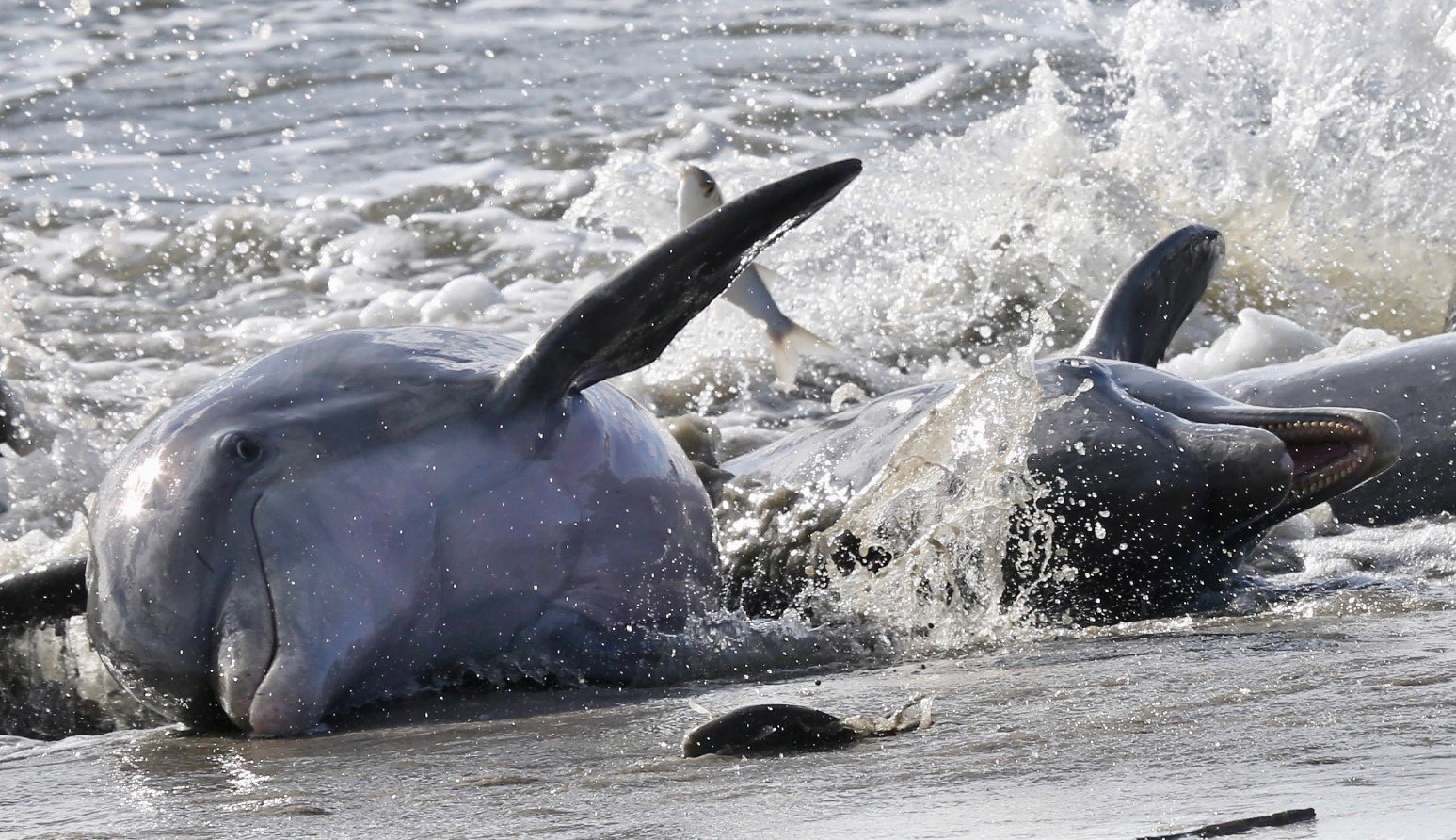
ON A MISSION
The dolphins aren’t the only ones at Captain Sams Spit with a goal in mind. Almost every day, from two hours before to two hours after low tide, you’ll find a friendly face from the Lowcountry Marine Mammal Network (“LMMN”).
LMMN’s mission is to protect our local marine mammals, largely by educating the public. A lot of people don’t realize it is against federal law to feed or disturb wild dolphins, due to the harm it can cause.
A quick note on feeding the dolphins – what seems like a few minutes of entertainment or perhaps even being kind or helpful is exactly the opposite. It leads to beggar behavior which causes boat injuries, loss of foraging prowess, and isolation from the pod which can become permanent, leaving the dolphin more susceptible to predators.
Since the 2017 inception of their Dolphin Education Program, funded by a grant from the Town of Kiawah Island, LMMN’s team of scientists and activists have advised close to 20,000 people about these fascinating animals and recommended safe viewing distances for observing them. At the same time, the organization is studying dolphin behavior in the field, and collecting valuable data it shares with NOAA and others to advance scientific research.
You’ll recognize the LMMN volunteers by their bright blue vests with “Ask Me A Question” on them, and the “Education Station” sign next to their beach chairs. They carefully position warning signs to delineate the safe viewing locations for that day (around 50 feet away from the dolphins).
These dedicated dolphin devotees (primarily Kiawah and Seabrook residents) have extensive training. They are eager to share information about dolphins in general, and help you become more familiar with the ones who frequent Kiawah — with photos to identify who is who.
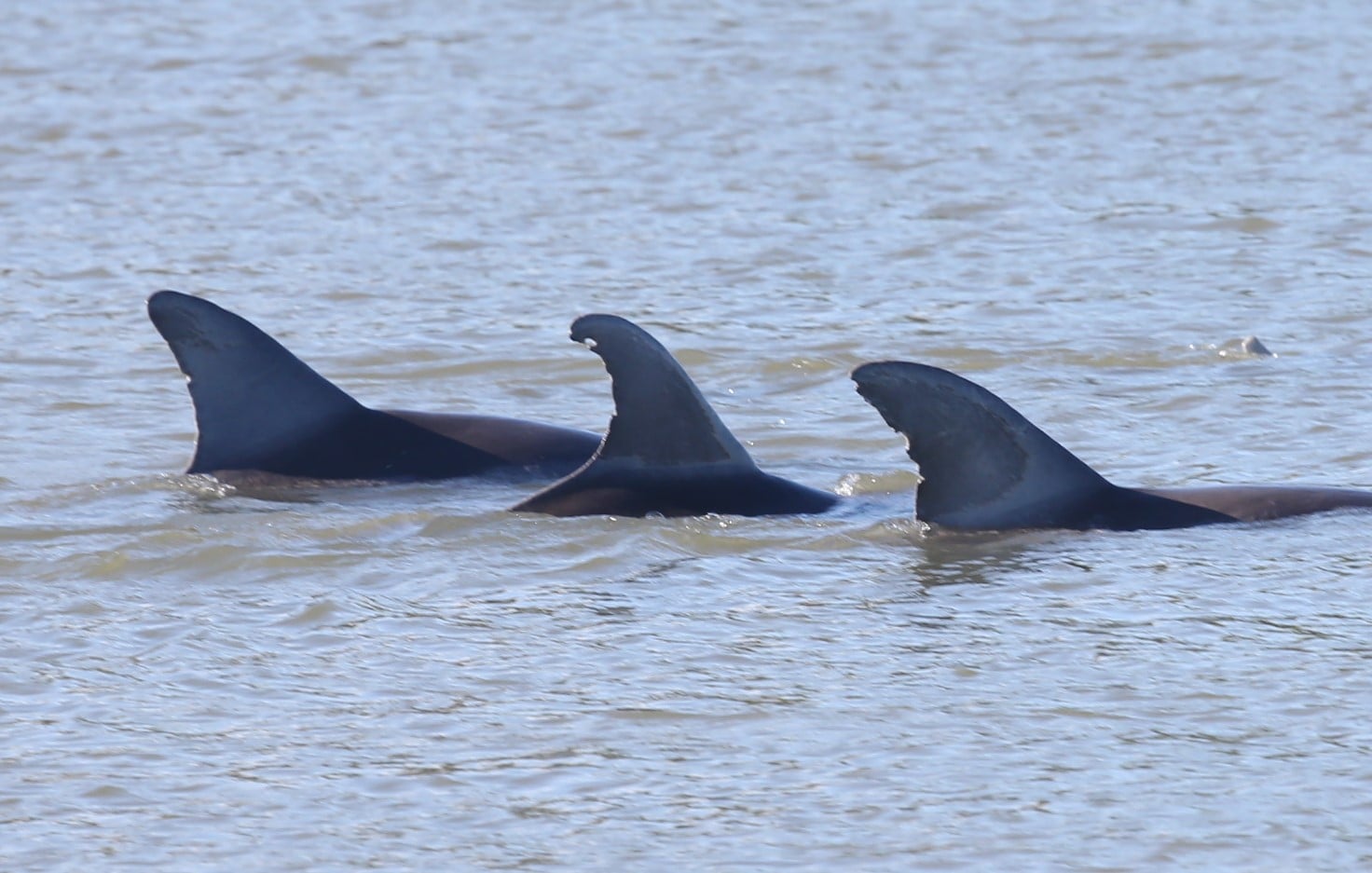
POD LIFE
Bottlenose dolphins are very social animals. In the wild, they live in “fission-fusion” societies, their groupings constantly changing. Group compositions are influenced by gender, age, familial relationships, and reproductive status.
Maternity pods (sometimes called “nurseries”) are made up of mothers with babies who support each other in raising the calves, including babysitting duties. Juvenile pods are males and females who have left the nurseries but are not yet sexually mature. (Think roving dolphin teenagers.) Once mature, females often return to their mother’s pod to raise their own progeny. Adult males will typically “pair-bond” with another male or males, forming a complex and lifelong relationship wherein they travel, hunt, and seek out females together. Having a wingman provides many advantages.
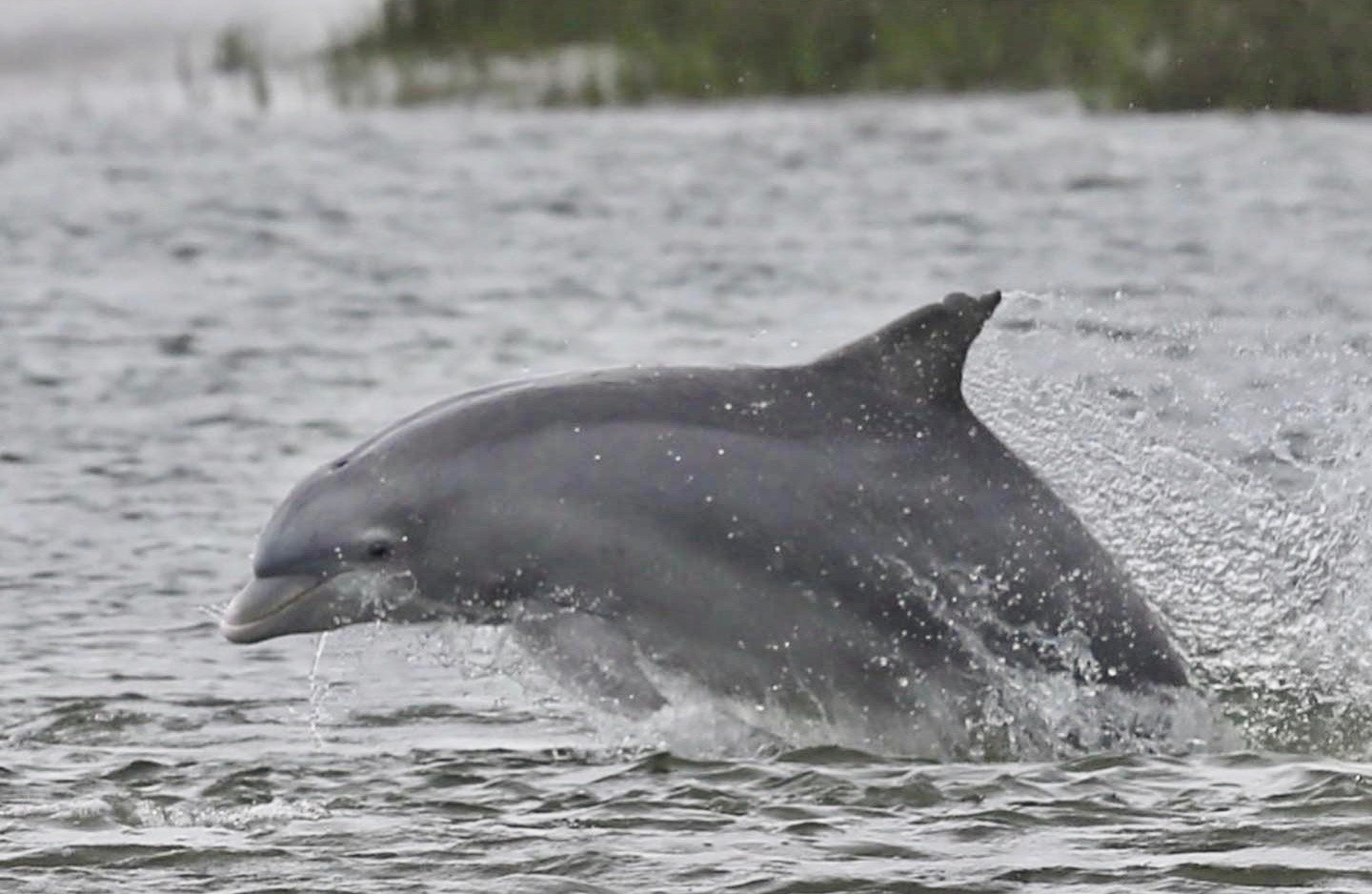
MEET THE CREW
Charleston’s at-large dolphin population (from North Edisto to Charleston Harbor) numbers around 350. They stay year-round, and mainly stick to the vast river network, in pods containing between two to thirty members.
Here on Kiawah, 90% of the dolphin sightings are of the same eight characters, who consistently visit Captain Sams Inlet to feed. A few have been tracked all the way back to the 1990’s. Dolphins can live to be in their 40’s. Thus, long-time Kiawah residents and vacationers alike have observed members of this close-knit group over several decades, getting to know them as old friends.
First there’s KoKo and her calf Kai. These two are the easiest to recognize right now due to Kai swimming in “baby position”: surfacing slightly after and behind KoKo. Kai turned three this spring and is learning strand feeding from KoKo. Babies stay with their mother for three to six years.
Step is at least 28 years old and the matriarch of the bunch. She watches over the group, and babysits Kai. She been observed with five calves of her own over the years, two of whom — Rosie and High Scoops — are now older and independent but still strand feed with her sometimes. Step has a distinctly distorted fin, probably the result of an injury.
Rosie is around 14 years old, named for her very pink belly. Or it may be his very pink belly. (Determining dolphin gender is tricky and Rosie’s is T.B.D..) As Rosie reaches sexual maturity, here’s hoping the feminine name rings true producing a calf in the near future.
High Scoops is Step’s other child in the group. He’s about five years older than sibling Rosie (so around 19 years old). He has a distinct scar behind his dorsal fin and you’ll sometimes find him in the company of the dynamic duo: Times3 and Small Nick.
Times3 is a genetically confirmed male with three large notches in the back of his dorsal fin. Small Nick is always with him, strand feeding or cruising the inlet, leading everyone to assume he’s male also, because they act like a male bonded pair.
Finally there’s Hook, first spotted as a calf in 2003 making him at least 18 years old. He’s the most frequent visitor to Captain Sams. You can always count on Hook to be around, cruising and feeding with Times3 and Small Nick, or sometimes Step, and also playing with baby Kai.
As you have likely surmised, the Kiawah dolphins’ names are usually based on an aspect of their appearance. They have official database numbers also, but the clever names are easier for fast identification and making notes on the fly. In addition, there’s no denying that naming the dolphins helps the Kiawah community recognize these animals and feel invested in protecting them.
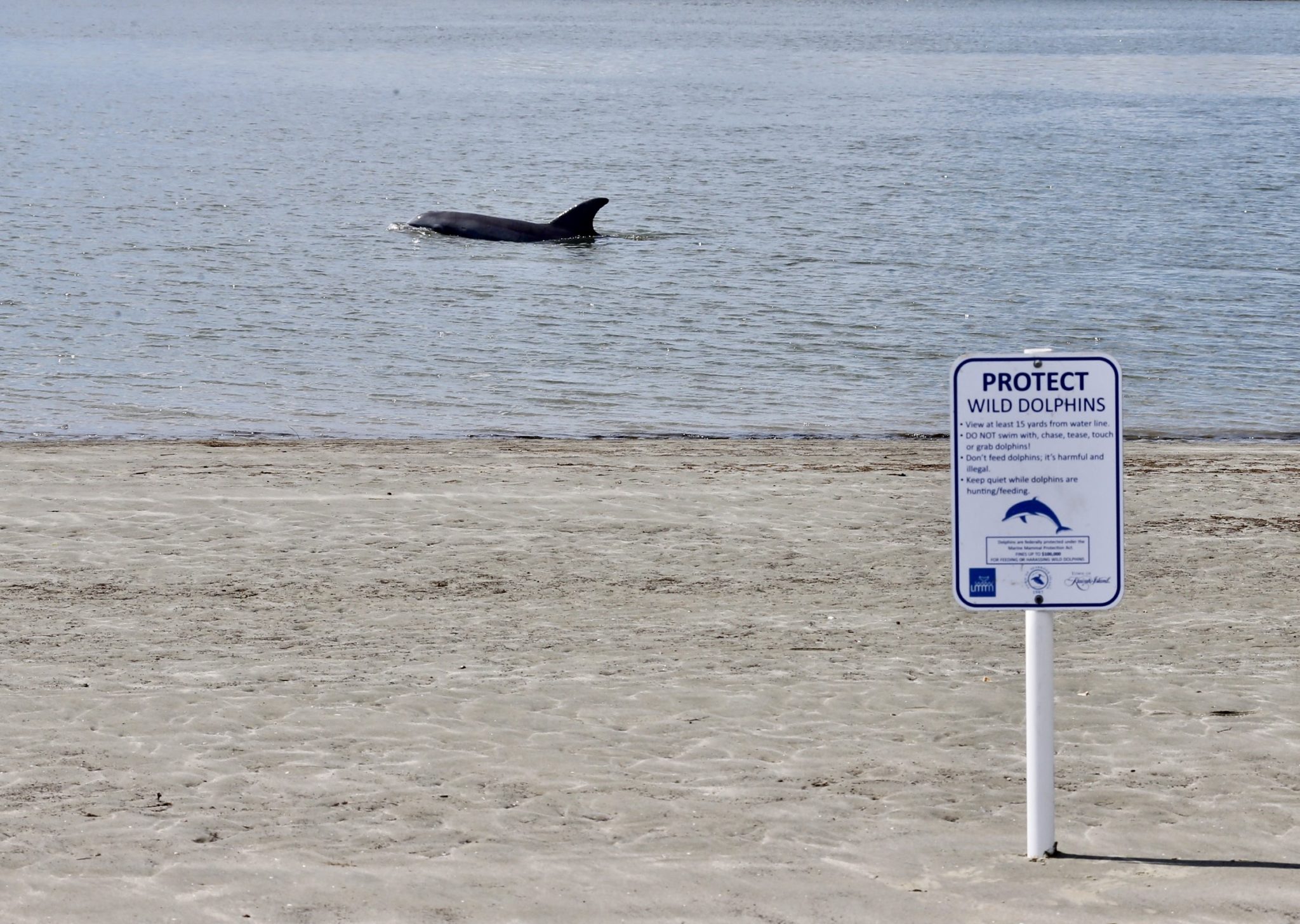
KEEPING THEM SAFE
Wild dolphins can be easily disturbed by the presence of people and watercraft, especially while feeding, resting, and caring for young. Chronic disturbance can have far-reaching implications such as compromised health, stress, injury, reduced reproduction, displacement from the group, and even complete avoidance of important habitats.
Dolphins may display certain signals when they are unhappy such as tail slapping, leaping, and chuffing (loud blows), but often they will simply stop what they are doing and leave the area. This is bad for them (for example if it keeps them from eating, teaching strand feeding to babies, or mating), and also very disappointing for spectators. Thus, it’s in everyone’s best interest to maintain a respectful distance. Use binoculars, or the zoom lens on your camera. Keep 15 yards between you and the dolphins. (50 yards when in a vessel.)
Dolphins can’t carry “Do Not Disturb” signs with them, so LMMN’s notices on the beach are your visual cue where to stand to observe the strand feedings, which thrill bigger and bigger crowds on Kiawah every year.
Spring is mating and calving season, so it’s an opportune time to walk down to Captain Sams and chat with Lowcountry Marine Mammal Network about our friends in the sea.
Dolphins are one of 18 different species of mammals that call Kiawah home. Kiawah’s bobcats, while rarely seen around the island, also play a large role in the island’s ecosystem.
Many thanks to Lauren Rust, founder of Lowcountry Marine Mammal Network, for providing information and photography for this article, and for her continued work on behalf of these beautiful creatures who bring moments of joy to so many.


